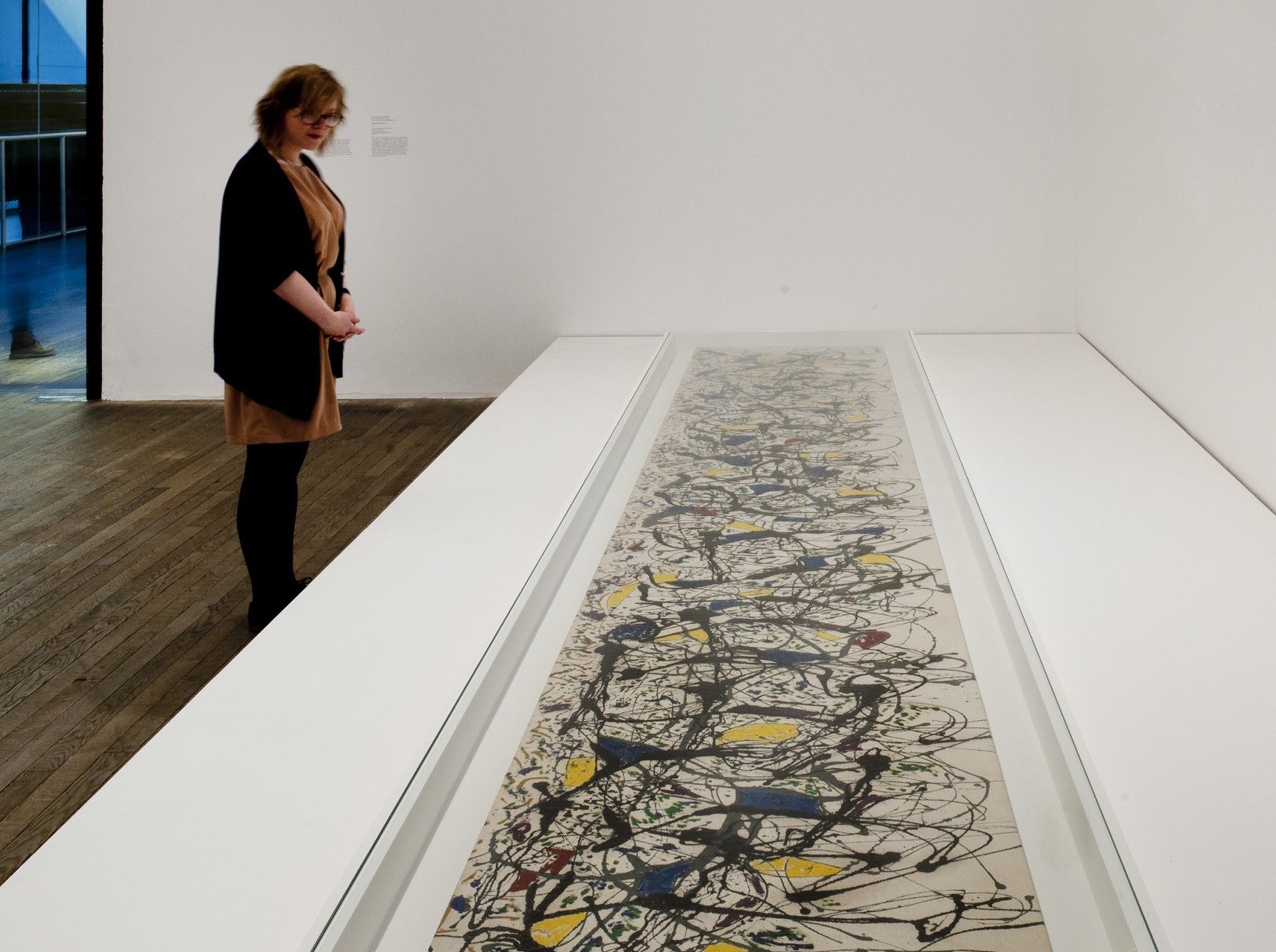IoS art review: A Bigger Splash, Tate Modern, London
Two painters make a solid start, but what follows is endless sixth-form performance art

After a couple of minutes in Room One of Tate Modern's new show, A Bigger Splash, you find yourself fighting the urge to throw your cap in the air and cheer. Such daring! Such insight! Such curatorial cheek! By the time you reach Room 13 – unlucky for some – that impulse has long since faded.
In the show's brazen first room are two canvases, one each by a pair of painters as unalike as any whose careers ever overlapped. (David Hockney was at art school when a drunk Jackson Pollock ran his car off the road.) On the left is Pollock's Summertime of 1948, exhibited, like a Roman mosaic, on the floor. The reason why is spelt out by a film on the wall above it.
This shows Pollock at work in his studio, flicking paint at a canvas at his feet: we are invited to look at Summertime horizontally because that is how it was made. The Hockney, too, comes with a matching film, in this case of the artist's house in Los Angeles, self-conscious young men bobbing around naked in its pool. Both film and canvas are called A Bigger Splash, whence the name of the Tate's show.
So far, so odd. You may by now be asking what these two apparently dissimilar works have to do with each other, and the answer is, nothing at all: that is why they are here. The exhibition's subtitle is Painting After Performance, and its aim is to trace the link (or links) between the two subtitular artforms, one as old as Apelles, the other in its rapidly grizzling sixties. Hockney and Pollock act as a pair of brackets, the vast gap between them suggesting the breadth of the connection between performance art and painting since 1948. But there is a problem.
When the American critic Harold Rosenberg coined the term Action Painting in 1952, he – and, by extension, Action Painters such as Pollock – seemed to anticipate what we now call performance art (or "live art", if we are being groovy). Actually, Rosenberg was merely describing one half of a split in painting that is as old as paint itself.
Painters have always sat somewhere along a line between making images and making marks, hiding or revealing themselves in their work. The ruggedly heterosexual Pollock sits with, say, Frans Hals at the far end of the show-yourself tendency, his splats and blobs a form of self- portraiture. Hockney's painting, by contrast, is firmly in the Poussinesque closet. Its smooth surface reveals the artist's milieu, but hides the mark of his hand. A Bigger Splash isn't just an image, but the image of an image – a painting made to look, with its markless paint and bare canvas border, like an Ektachrome slide. Its devastating blandness comes from its layers of inscrutability.
And what has this to do with performance? Well, nothing. Films may exist of Pollock and Hockney at work, but that does not make them performers, and certainly not performance artists. To see the work of either man in that way is to misunderstand it. Perhaps Room One is itself meant as a kind of performance – cheeky, in-your-face, but not to be believed. At least it is entertaining. What comes in the 12 rooms beyond is not, and is not good art history, either.
The trouble, maybe, is that the show gets things the wrong way around: really, the story it tells is of performance after painting, not vice versa. When, in Room Five, Bruce Nauman covers and then uncovers his body in paint in the 1968 filmed performance Flesh to White to Black to Flesh, he is doing something new by way of something very old. Likewise when the French New Realist, Yves Klein, encouraged naked models to smear themselves in paint and rub up against his canvases, or when Niki de Saint Phalle fired paint-filled ampoules at a gallery wall. The Poured Paintings of the Viennese Actionist, Hermann Nitsch, may set out to undermine the traditions of paint on canvas, but they do so by putting paint on canvas. It is the performers who feel anxious about their place in the paint/performance equation, not the painters.
And so they should: God, performance art is tedious. I can count on one finger the performance artists whose work I would cross the road to see, and her name is Marina Abramovic (not represented in this show.) Otherwise, it is sixth-form philosophy, a library of dull romans à clef with clunky, badly oiled keys, acted out instead of written down. And there is so, so much of it.
To 1 April, 2013 (020-7887 8888)
Critic's Choice
London will be stuffed with photography exhibitions this winter. Start with Ansel Adams's dramatic black-and-white images, which capture the grandeur and wildness of America's forest, peaks and coastal scenery. Photography from the Mountains to the Sea is at the National Maritime Museum in Greenwich until 28 April.
Subscribe to Independent Premium to bookmark this article
Want to bookmark your favourite articles and stories to read or reference later? Start your Independent Premium subscription today.

Join our commenting forum
Join thought-provoking conversations, follow other Independent readers and see their replies